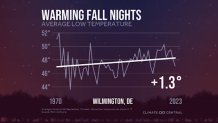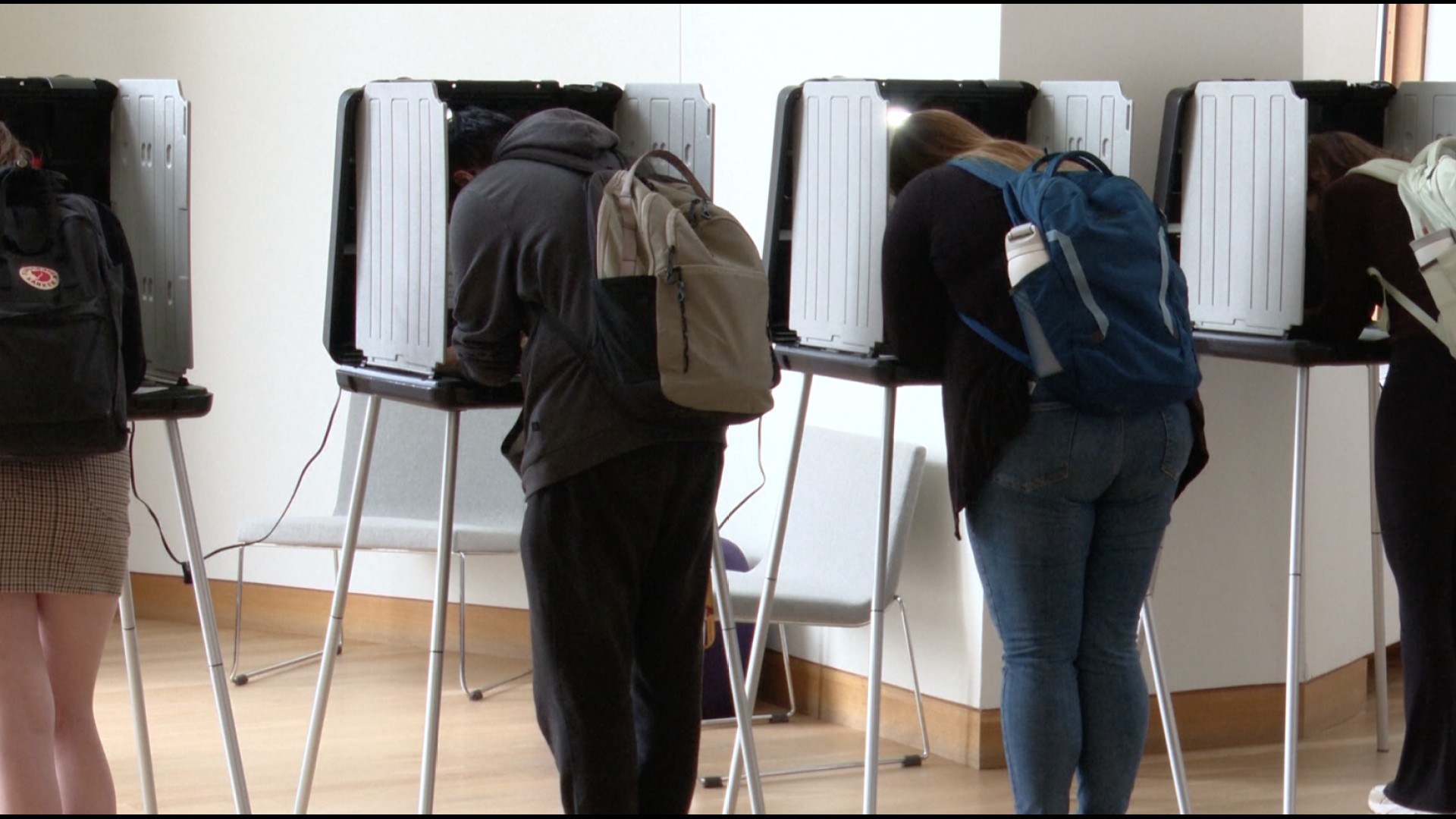This week begins the start of the peak time for leaves changing colors in our region and climate change has both a direct and an indirect impact on when you'll see the colors change.
For many, the changing of the seasons offers a chance to take in nature's beauty with many heading to the Poconos and riding on the Lehigh Gorge Scenic Railway in Jim Thorpe, Pa.
“This is so popular is because of the colors on the trees and the leaves and there are people that will make a whole weekend and be a tourist for a day," Senior Vice President of the Passenger Department at the Reading and North Railroad Matt Fisher said.
Get top local stories in Philly delivered to you every morning. Sign up for NBC Philadelphia's News Headlines newsletter.
Among the many passengers was Jackie Peace and her dog who traveled from Maryland to take the train ride and see the changing leaves.
“It was a wonderful ride. It was beautiful scenery. Trees are yellow now and you can see the river. It was fun," Peace said.
The change in colors starts in high elevations before starting in our region.
Changing Climate
In-depth coverage of our changing climate and environmental issues
So, locally, we haven't hit our peak and our changing climate can influence that timing.
“Warmer temperatures in the fall particularly at nighttime can delay the start of senescence, or the leaf-changing process, and also push back those dates, those traditional dates, when we see the most vibrant colors," Lauren Casey, of Climate Change, said.
Rise in overnight temps impacts fall foliage
According to the non-profit and non-partisan group Climate Central Philadelphia has seen a rise in overnight temperatures during the fall season.

Warmer nights can lead to dull colors in the fall while cooler nights enhance leaf colors.
Since 1970, the average low temperature has gone up 3.9 degrees in Philadelphia.

Meanwhile, closer to the coast in Atlantic City, New Jersey, the average low has gone up by 3.6 degrees.

And, in Delaware, places like Wilmington have only seen a 1.3-degree jump.

Drought impacts changing leaves
Temperatures aren't the only factor contributing to vibrant leaf colors, droughts also play a role.
“Something we need to be concerned about is drought. Drought can stress out the trees. It can cause leaves to shrivel up and die before they’ve changed over," Casey explained.
Looking at the latest U.S. drought monitor map for the Delaware Valley it shows that 92% of the region is at least abnormally dry.
- The light brown sections show 40% at moderate drought from Delaware through Philadelphia.
- The darkest and newest color showing up for our region has parts of Atlantic and Burlington counties, specifically the Pine Barrens, in the severe drought stage.

Despite current drought conditions and warmer nights, there is some good news for those wanting to get out and see this year's fall foliage, according to the Reading Railroad.
“A lot of people think that the peak of the leaf color change is in early October. It’s traditionally about the second week of October into the third week of October and that can be definitely changed if a storm comes through with rain and wind. Then unfortunately the leaves will go down quicker. But a lot of times you’ll still see a full color all the way through the third and even fourth week of October," Fisher said.
So, you do still have time to take full advantage of the beautiful colors along the Lehigh Gorge Scenic Railway.



